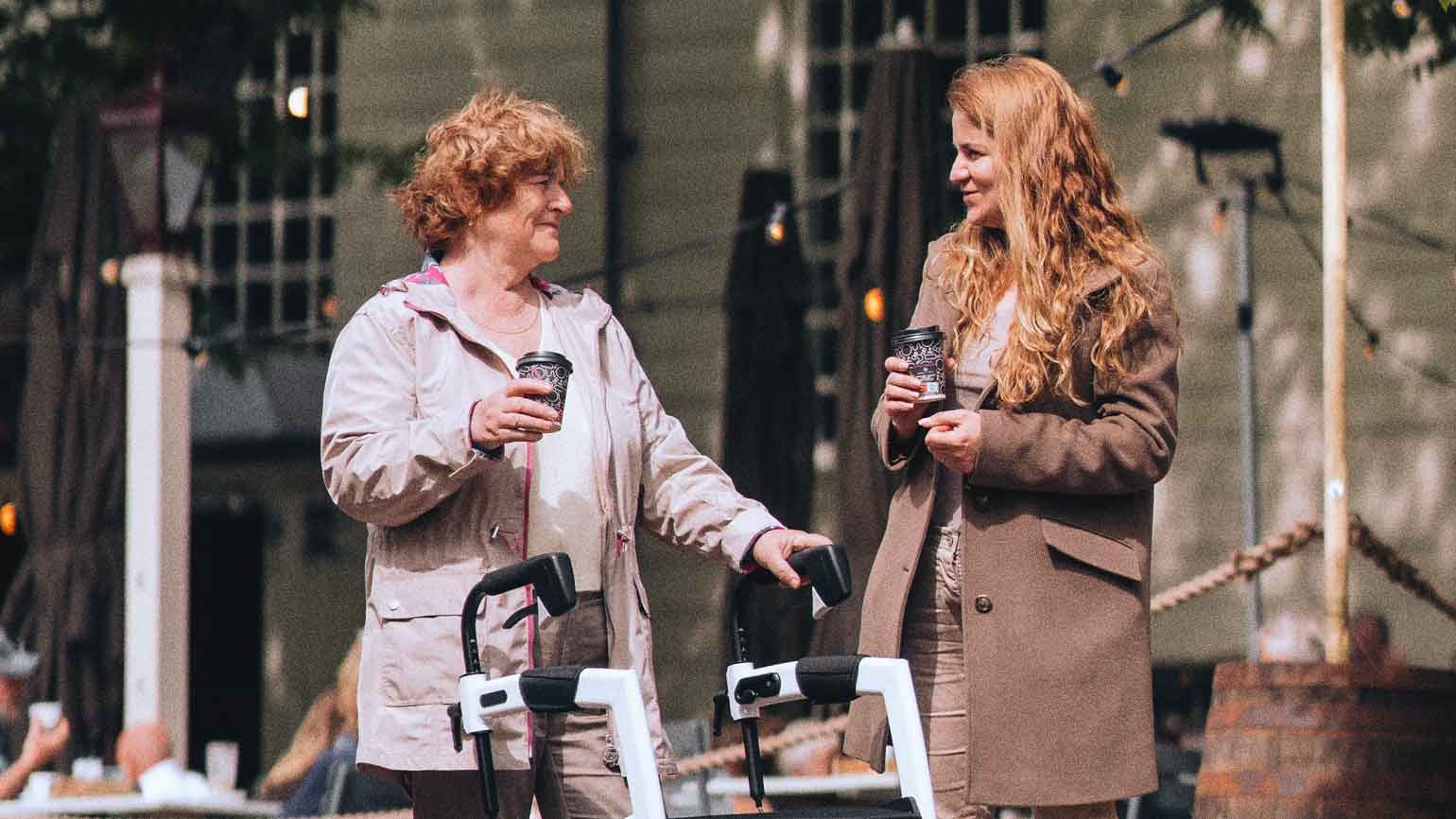Following this 8-step plan to reach your goals will make all the difference.
Setting (and achieving!) goals is an exciting way to make progress in life, but it’s not always easy. It takes a lot of courage to look at your life and decide that you want something different. It takes even more courage to actually do something about it. You may have had one profound moment where you realized you needed to make a change, or maybe it was a combination of little moments over time. No matter what brought you to the moment of setting goals and getting serious about achieving them, you probably realized pretty quickly that having goals alone isn’t enough. Learning how to make your goals realistic and having a tried-and-true strategy to do so can make all the difference.
Here is a step-by-step guide for making those realistic goals:
- Find your “why”
- Dream big
- Write your goal down
- Break it down
- Evaluate where you are right now
- Make a plan
- Celebrate the small wins
- Take it one day at a time
Seems simple, right? Now let’s dive into these steps a little further:
Find Your “Why”
I once had a friend set a goal to eliminate sugar for an entire month. I remember thinking, “That’s so healthy! I should do that too!” and so without much thought, on the spot, I decided that I would eliminate sugar for one whole month.
I didn’t even make it a day.
The problem is that I wasn’t connected to the goal at all. I heard something that sounded interesting and so I thought I should do it. But it didn’t work.
If you want your goals to be realistic, find your “why.” The goal can’t just be interesting or valuable in general, it must be meaningful to you. Dig deep and ask yourself, “Why does this goal matter? Why do I want to achieve it?” Only when you have a legitimate answer to those questions will your goals become realistic.
Dream Big
A realistic goal doesn’t mean your goals must be measly or unimportant. In fact, the best way to aim for a realistic goal is to dream big, because when you’re dreaming big, you’re working toward something you really want and deeply believe in. Once you find your why, or your whys (because there might be many!), you’re ready to dream.
In your wildest dreams, what would you hope to achieve? Maybe you would dream of…
- Lose weight
- Buying your first home
- Writing a book
- Reconciling a broken relationship
- Earning a degree
- Running a marathon
- Starting a business
The opportunities are truly endless. You could set your mind to achieve any goal, and you get to decide for yourself what makes it on your “dream big” list.
Write Those Realistic Goals Down
After spending time thinking about what you want to achieve, write down your goals. It might sound simple, but when overlooked it can be detrimental. Not only does writing down your goals make them concrete and clear, but it also serves as a helpful accountability tool and reminder of what you are trying to achieve.
Don’t just write them down in a notebook that will end up stuffed in a drawer. Post them on your bathroom mirror or on the wall near your appointment calendar. Make sure they are visible and clear so you can be motivated every single day.
Break Them Down
You’ve written down your list of big dreams. You know what you want to accomplish. Now the only question is how?
The next step is to take each of your big goals and break them down. Think of it like working backwards. If your big goal is to lose 100 pounds, you must first lose 90 pounds. To lose 90 pounds, you must first lose 70 pounds. Before you lose 70 pounds, you have to lose 50 pounds. And so, an easy sub-goal to losing 100 pounds is first to lose 50 pounds. Break it down even further and make your first sub-goal to lose 10 pounds, and then 25.
Evaluate Where You Are Right Now
It doesn’t matter where you are, but you’ve got to know where you’re starting from. It’s the only way you can be honest with yourself and set realistic goals for the future.
Here are a few examples:
Goal: Lose Weight
Losing weight can be a challenging and complex process. This may be a goal you’ve had in the works for several months or one you’re just beginning. Evaluate where you are right now. Do you have an exercise schedule or nutrition plan? If not, that’s the perfect place to start.
Goal: Buy a House
Evaluate where you are right now by deciding where and in what neighborhood you’d like to purchase a home, and then begin your research. What is the median cost of a home there? What would a small, medium, or large down payment cost?
This should naturally lead you to analyze your current financial situation. You may realize that there are other goals you need to achieve prior to achieving this big goal. Don’t be discouraged! That is part of the process of setting realistic goals (remember Step 4?).
Goal: Write a Book
Maybe you’ve always dreamed of being an author, but you don’t think it will ever happen. How would you even begin? Well, a pen and paper (or a blank document on a computer) is a great place to start.
Think through what type of book you want to write. Fiction? Nonfiction? Memoir? If you’re writing nonfiction, there should be one core idea that runs through the book like a thread. What do you want that thread to be? If you’re writing a novel, you need a story arc. Who will be your main character, and what is the crux of their story? Evaluate where you are right now. Then make a plan.
Goal: Run a Marathon
How far can you run right now? You may be coming off the high of completing a half marathon and thinking, “Why not make it a full one?” Or, you might be firmly planted on your couch thinking, “I want to do something more than this.” You can run a marathon starting from either of these situations, but your plan will have to look different.
Make a Plan for Those Realistic Goals
In his famous book The Little Prince, French author Antoine de Saint-Exupéry aptly wrote, “A goal without a plan is just a wish.” If you want your goals to be realistic, you have to make a plan.
So far, you’ve found your “why,” dreamed big, written it down, broken it down, and evaluated where you’re starting from. Now it’s time to plan. It doesn’t have to be elaborate or excessive, and you’ve already done the heavy lifting in Step 4 by breaking down your big goals.
But sub-goals alone are not enough. You need a plan, just as Antoine de Saint-Exupéry suggested. It’s the perfect follow-up to Step 4 (Break it Down) and Step 5 (Evaluate Where You Are Right Now).
It uses the sub-goals of Step 4 and the honest reality of Step 5. From there, you can decide what you will do this week and even today.
It might look something like this:
Goal: Lose Weight
I will exercise three times and track my meals on a nutrition app.
Goal: Buy a House
I will create a monthly budget based on my income and debts and determine how much I can afford for a monthly payment.
Goal: Write a Book
I will write 500 words a day, four days a week.
Goal: Run a Marathon
I will walk/run three miles a day, three times a week.
Celebrate the Small Wins
As you’re setting realistic goals, with sub-goals and a plan, don’t forget to celebrate the small wins along the way. If your big goal is to lose 100 pounds, don’t wait until the last pound is shed to celebrate. Celebrate when you have lost the first 10 pounds, and then again at 25 and 50. If your goal is to run a marathon, celebrate the first time you run three miles without stopping. That alone is a huge accomplishment! Celebrating along the way will keep you motivated and excited about the progress you are making toward your big goals.
Take It One Day at a Time
Ultimately, the best way to set and maintain realistic goals is to take it one day at a time. Remember that in the end, these are your goals, and no one else’s. If you have a rough week, face a setback, or even have to start from scratch, don’t be discouraged. Just by having a goal and a plan, you’re closer today than you were yesterday. And tomorrow you’ll be closer than you are today.
What If You Still Don’t Reach Your Realistic Goals?
Even when you have a goal and a plan, sometimes things go wrong. You miss a day, you get thrown out of rhythm, and suddenly your whole plan is off track. It’s okay! Reassess and get back to work. Don’t let a stumble or pause end your dream or set you back. It’s a normal part of the human experience, and if you’re intentional and mindful, you can even use setbacks as a springboard to get back on track.
Setting realistic goals and achieving them is yours for the taking! Dream big and watch yourself achieve more than you ever thought possible.










